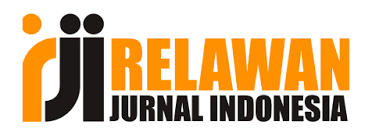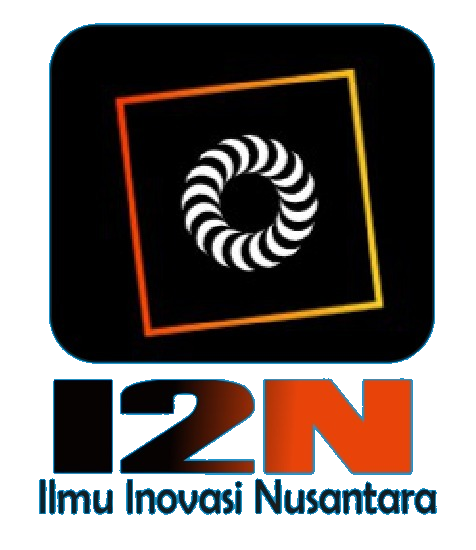Lanjiefu in Wenzhou City under the Perspective of Digital Humanities: Constructing a Knowledge Graph to Empower the Cultural Resource Base
DOI:
https://doi.org/10.58557/(ijeh).v5i3.322Keywords:
Data mining, Digital humanities, Entity recognition, Knowledge graph, Relationship extraction.Abstract
Using knowledge mapping technology, a comprehensive and fine-grained cultural resource database is successfully constructed with the unique 'Lanjiefu' culture of Wenzhou City as the research object in the protection and inheritance of intangible cultural heritage. The database adopts data mining, natural language processing and semantic web technologies to deeply analyse a large amount of text, image and video materials, extract key entities, relationships and attributes, and form a structured knowledge representation. The accuracy and completeness of the knowledge graph is ensured by designing and implementing a set of efficient knowledge graph construction processes using entity recognition, relationship extraction and knowledge fusion. User-friendly query interfaces and visualisation tools are developed on this basis, enabling non-specialist users to easily access and understand complex cultural knowledge, and facilitating the wide dissemination and in-depth study of cultural resources. The experimental results show that the proposed system can not only effectively manage and display Lanjiefu cultural resources, but also provide a solid foundation for subsequent intelligent query, personalised recommendation and cultural education. This study opens up a new path for the digital preservation of intangible cultural heritage, and demonstrates the great potential of computer science applications in the cultural field
References
Bearman, D., & Trant, J. (2007). "Museums and the Web: A decade of innovation." Museum Management and Curatorship, 22(1), 49-62.
Bordes, A., Usunier, N., Garcia-Duran, A., Weston, J., & Yakhnenko, O. (2013). "Translating embeddings for modeling multi-relational data." Advances in Neural Information Processing Systems, 26.
Candela, G., Escobar, P., Carrasco, R. C., & Marco Such, M. (2018). A linked open data framework to enhance the discoverability and impact of cultural heritage. Journal of Information Science, 45(6), 756–766. https://doi.org/10.1177/0165551518812658.
Chen, H. (2011). Lanjiefu: Locale of creation and imagination of culture with local features. Journal of Wenzhou University.
Cleland-Huang, J., Settimi, R., BenKhadra, O., Berezhanskaya, E., & Christina, S. (2005). Goal-centric traceability for managing non-functional requirements. International Conference on Software Engineering. https://doi.org/10.1145/1062455.1062525
Doerr, M., Gradmann, S., Hennicke, S., Isaac, A., Meghini, C., & Van de Sompel, H. (2018). "The Europeana Data Model (EDM)." Semantic Web, 6(1), 3-21.
Dong, X., Gabrilovich, E., Heitz, G., Horn, W., Lao, N., Murphy, K., … Zhang, W. (2014). Knowledge vault. Proceedings of the 20th ACM SIGKDD International Conference on Knowledge Discovery and Data Mining. https://doi.org/10.1145/2623330.2623623
Eckhardt, J., Vogelsang, A., & Fernández, D. M. (2016). Are ‘non-functional’ requirements really non-functional? In Proceedings of the 38th International Conference on Software Engineering - ICSE '16. https://doi.org/10.1145/2884781.2884788
Edmond, J., & Garnett, V. (2015). APIs and researchers: The emperor’s new clothes? International Journal of Digital Curation, 10(1), 287–297. https://doi.org/10.2218/ijdc.v10i1.369
Eide, Ø. (2019). "Humanities data and digital humanities." Digital Scholarship in the Humanities, 34(3), 456-473.
Fan, Q. (2023). Research on intangible cultural heritage resource description and knowledge fusion based on linked data. The Electronic Library, 41(6). https://doi.org/10.1108/el-01-2023-0018
Fan, W., Gordon, M. D., & Pathak, P. (2019). "Personalization of cultural heritage retrieval using knowledge graphs." Information Processing & Management, 56(6), 102079.
Fette, G., Banach, M., Cohen, J., Frisse, M. E., Huber, J. T., & Haendel, M. A. (2019). Implementation of a HL7-CQL engine using the graph database Neo4J. PubMed, 267, 46–51. https://doi.org/10.3233/shti190804
Guo, Q. (2020). Research on the ways to protect and inherit intangible cultural heritage in the information age. Journal of Physics. https://doi.org/10.1088/1742-6596/1575/1/012169
Guo, X., Liu, X., Huang, Q., & Zhang, S. (2021). "A survey on knowledge graph construction and applications." Big Data Mining and Analytics, 4(1), 1-17.
Hogan, A., Blomqvist, E., Cochez, M., Gayo, J. E. L., Gutiérrez, C., Kirrane, S., ... & Polleres, A. (2021). "Knowledge graphs." ACM Computing Surveys (CSUR), 54(4), 1-37.
Huang, Y., Yu, S., Chu, J., Fan, H.-Y., & Du, B. (2023). Using knowledge graphs and deep learning algorithms to enhance digital cultural heritage management. Heritage Science, 11(1). https://doi.org/10.1186/s40494-023-01042-y
Islami, M., Wehn, U., & van den Homberg, M. (2019). "A framework for digital cultural heritage preservation." Heritage Science, 7(1), 1-14.
Ji, S., Pan, S., Cambria, E., Marttinen, P., & Yu, P. S. (2022). A survey on knowledge graphs: Representation, acquisition, and applications. IEEE Transactions on Neural Networks and Learning Systems, 33(2), 494–514. https://doi.org/10.1109/TNNLS.2021.3070843
Kadyan, S. (2018). Role of functional requirements for bibliographic records in digital library system. International Journal of Library and Information Science, 7(1). https://doi.org/10.34218/ijlis.7.1.2018.007
Koutsomitropoulos, D. A., Hyvönen, E., & Papatheodorou, T. S. (2012). Semantic web and reasoning for cultural heritage and digital libraries. Semantic Web, 3(1), 1–1. https://doi.org/10.3233/sw-2012-0050
Kruengkrai, C., Sornlertlamvanich, V., Buranasing, W., & Charoenporn, T. (2012). Semantic relation extraction from a cultural database. International Conference on Computational Linguistics, 15–24.
Lanthaler, M., & Gütl, C. (2012). On using JSON-LD to create evolvable RESTful services. Proceedings of the Third International Workshop on RESTful Design - WS-REST '12. https://doi.org/10.1145/2307819.2307827
Liu, W., Zhang, Y., & Yu, X. (2020). "Cultural heritage digitization: A knowledge graph approach." Journal of Cultural Heritage, 45, 120-130.
Lou, C., Jia, X., & Xia, X. (2022). Research on relationship extraction for constructing knowledge graphs. 5th International Conference on Computer Information Science and Application Technology (CISAT 2022). https://doi.org/10.1117/12.2656649
Mäkelä, E., Hyvönen, E., & Ruotsalo, T. (2012). How to deal with massively heterogeneous cultural heritage data – lessons learned in CultureSampo. Semantic Web, 3(1), 85–109. https://doi.org/10.3233/sw-2012-0049
Mikolov, T., Sutskever, I., Chen, K., Corrado, G. S., & Dean, J. (2013). "Distributed representations of words and phrases and their compositionality." Advances in Neural Information Processing Systems, 26.
Nickerson, R. S., Perkins, D. N., & Smith, E. E. (2013). The teaching of thinking. Routledge.
Sang, Y. (2021). The path exploration on the inheritance and protection of intangible cultural heritage. Journal of Literature and Art Studies, 11(1). https://doi.org/10.17265/2159-5836/2021.01.008
Shen, H., Yu, Y., Zhao, J., & Liu, Z. (2020). "Visualization of cultural knowledge graphs: Applications and challenges." IEEE Transactions on Visualization and Computer Graphics, 26(2), 1371-1385.
Shneiderman, B. (1996). "The eyes have it: A task by data type taxonomy for information visualizations." Proceedings of the IEEE Symposium on Visual Languages, 336-343.
Su, L., Wang, F., & Li, J. (2022). "Integrating crowdsourced knowledge for cultural preservation: A hybrid approach." Journal of Knowledge Management, 26(4), 789-807.
Turcoane, O. (2014). Linked data, JSON-LD and the semantics of cultural and scientific heritage. Digital Presentation and Preservation of Cultural and Scientific Heritage, 4, 95–105. https://doi.org/10.55630/dipp.2014.4.11
Wan, Z., Xie, J., Zhang, W., & Huang, Z. (2019). BiLSTM-CRF Chinese named entity recognition model with attention mechanism. Journal of Physics: Conference Series, 1302(3), 032056. https://doi.org/10.1088/1742-6596/1302/3/032056
Wang, H., & Zhang, J. (2021). "Digital humanities and semantic web technologies: An overview." Digital Scholarship in the Humanities, 36(2), 210-229.
Wu, F., Zhang, Z., & Yu, J. (2017). "Entity and relation extraction for building cultural knowledge graphs." IEEE Transactions on Knowledge and Data Engineering, 29(6), 1252-1265.
Yan, C., Wang, R., & Fang, X. (2022). SEN: A subword-based ensemble network for Chinese historical entity extraction. Natural Language Engineering, 29(4), 1043–1065. https://doi.org/10.1017/s1351324922000493
Ye, D. (2011). History, characteristics and contemporary renaissance of Lanjiefu in Wenzhou. Journal of Wenzhou University.
Zhang, Y., Chen, L., & Huang, R. (2022). "A hybrid approach to knowledge graph completion in cultural heritage." Expert Systems with Applications, 199, 116953.
Zhong, L., Wu, J., Li, Q., Peng, H., & Wu, X. (2023). A comprehensive survey on automatic knowledge graph construction. arXiv.org. https://arxiv.org/abs/2302.05019
Downloads
Published
How to Cite
Issue
Section
License
Copyright (c) 2025 Wang Lu-lu, Fauzi Naeim Mohamed, Liu Ze-lin

This work is licensed under a Creative Commons Attribution-ShareAlike 4.0 International License.














